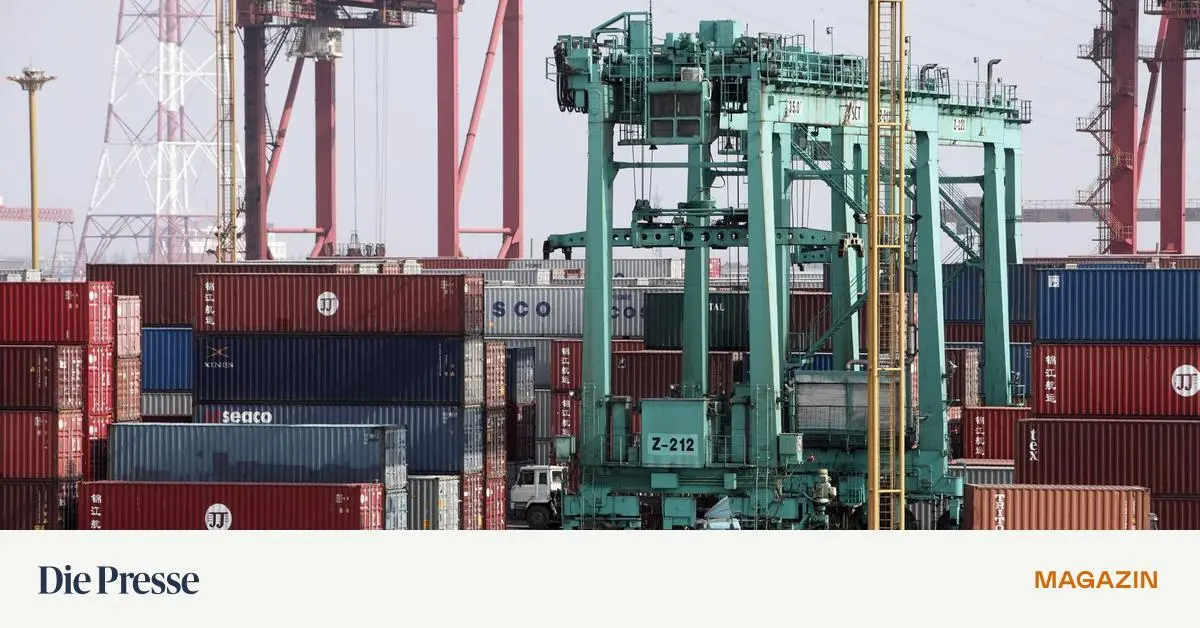While the US economy is showing early signs of slowing, the eurozone is expected to grow more strongly again in 2025. Inflation risks remain significant, according to the IMF.
The International Monetary Fund on Tuesday released its updated World Economic Outlook. The forecast for this year remained unchanged at 3.2 percent, and the global economy is expected to grow by 3.3 percent next year, marginally faster than forecast in April. At that time, IMF economists were assuming a 3.2 percent expansion in 2025. Growth in India and China account for half of the global increase.
While the US economy, which has so far been surprisingly resilient to the crisis, is showing the first signs of slowing down, IMF experts expect the eurozone to return to higher growth. For the US, economic output is expected to grow by 1.9 percent next year; for this year, the forecast has been cut by 0.1 percentage points to an increase of 2.6. For the eurozone, IMF experts expect growth of 0.9 percent this year, 0.1 percentage points higher than in April. In 2025, the currency area will grow by 1.5 percent.
Inflation risks have increased.
With a few exceptions, such as Saudi Arabia, where IMF staff revised growth forecasts slightly downward, and China, where forecasts for 2024 and 2025 were each raised by 0.4 percentage points, the IMF largely stuck to its April forecasts. The calculations were not carried out for all countries, including Austria.
However, forecast updates that are not related to changes in economic performance are more relevant to the current update. Inflation risks in particular have come to the fore, Pierre-Olivier Gourinchas, the IMF’s chief economist, told reporters on Tuesday. The decline in inflation is primarily due to higher prices for services. Normalization is not yet in sight, also because the trend in the United States has not been right recently.
What can drive inflation?
Geopolitical tensions can also become drivers of inflation. For example, trade disputes can increase import costs and thus prices. The International Monetary Fund has warned that cross-border trade barriers have increased recently. For example, the European Commission has temporarily imposed special high tariffs on electric cars from China. Countermeasures from the People’s Republic are now expected. The United States has also launched new tariffs against China. Escalating trade disputes are a short-term risk.
Global inflation is now expected to reach 5.9% this year and 4.4% next year, up from 6.7% in 2023. Gourinchas stressed that the trend is positive because there has been no recession. The bad news is that overall inflation remains high — although important parts such as energy and food prices have almost returned to pre-pandemic levels. The slow decline in inflation also means that monetary policy will remain tight for longer and interest rates will fall more slowly.
No rush for Fed
Despite the decline in inflation in the United States, Gorinchas believes the Fed can do so without rushing, telling Reuters in an interview: “We had a good number for June, but let’s see what we get for July and August with inflation.” US consumer prices in June are no longer rising as sharply as they did in May (3.3 percent) and April (3.4 percent).

“Total coffee aficionado. Travel buff. Music ninja. Bacon nerd. Beeraholic.”








More Stories
Wealthy families take more risks when it comes to money.
Salesforce and NVIDIA Form Strategic Collaboration to Drive AI Customer Innovation
Changing banks causes problems for customers